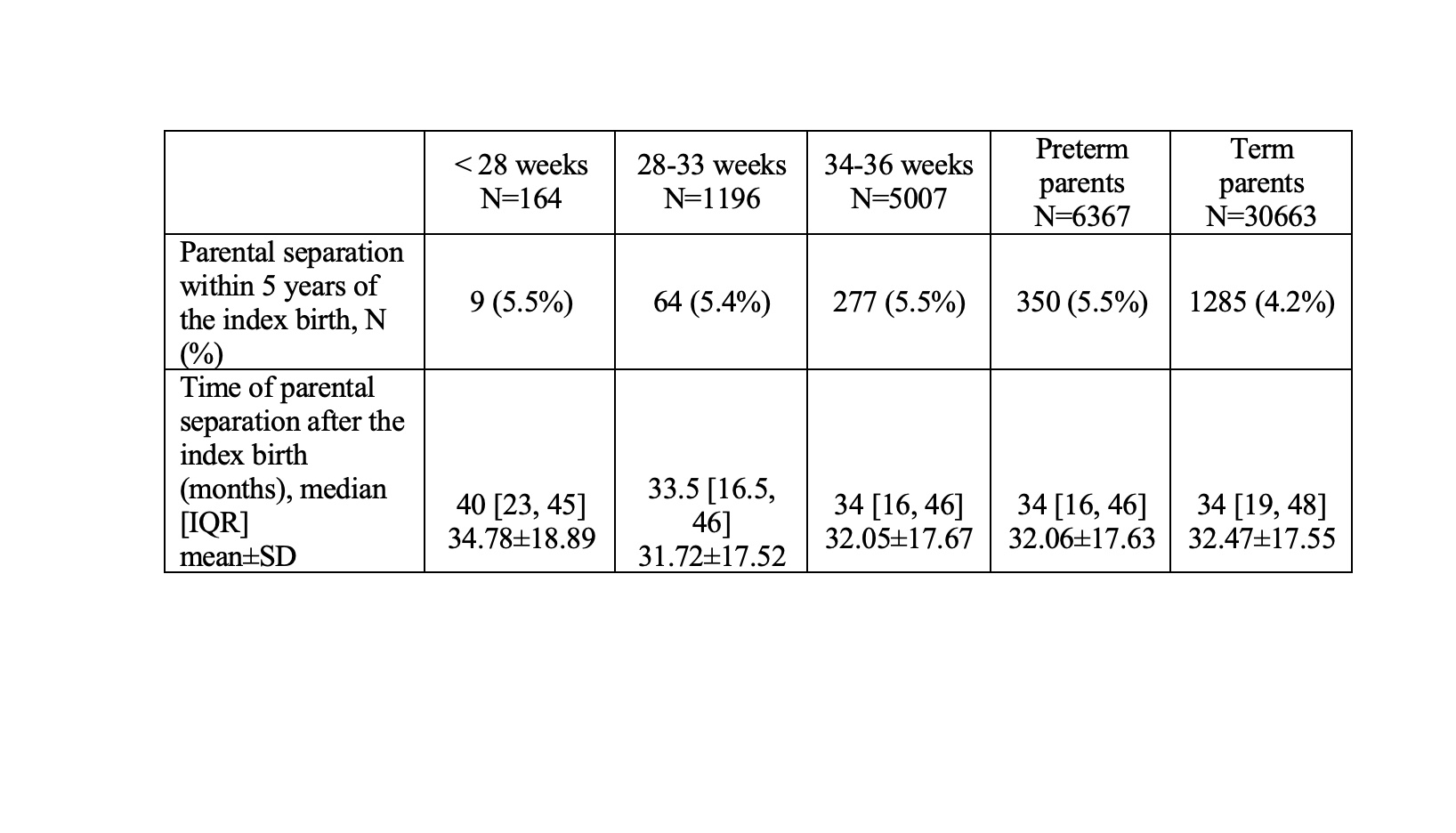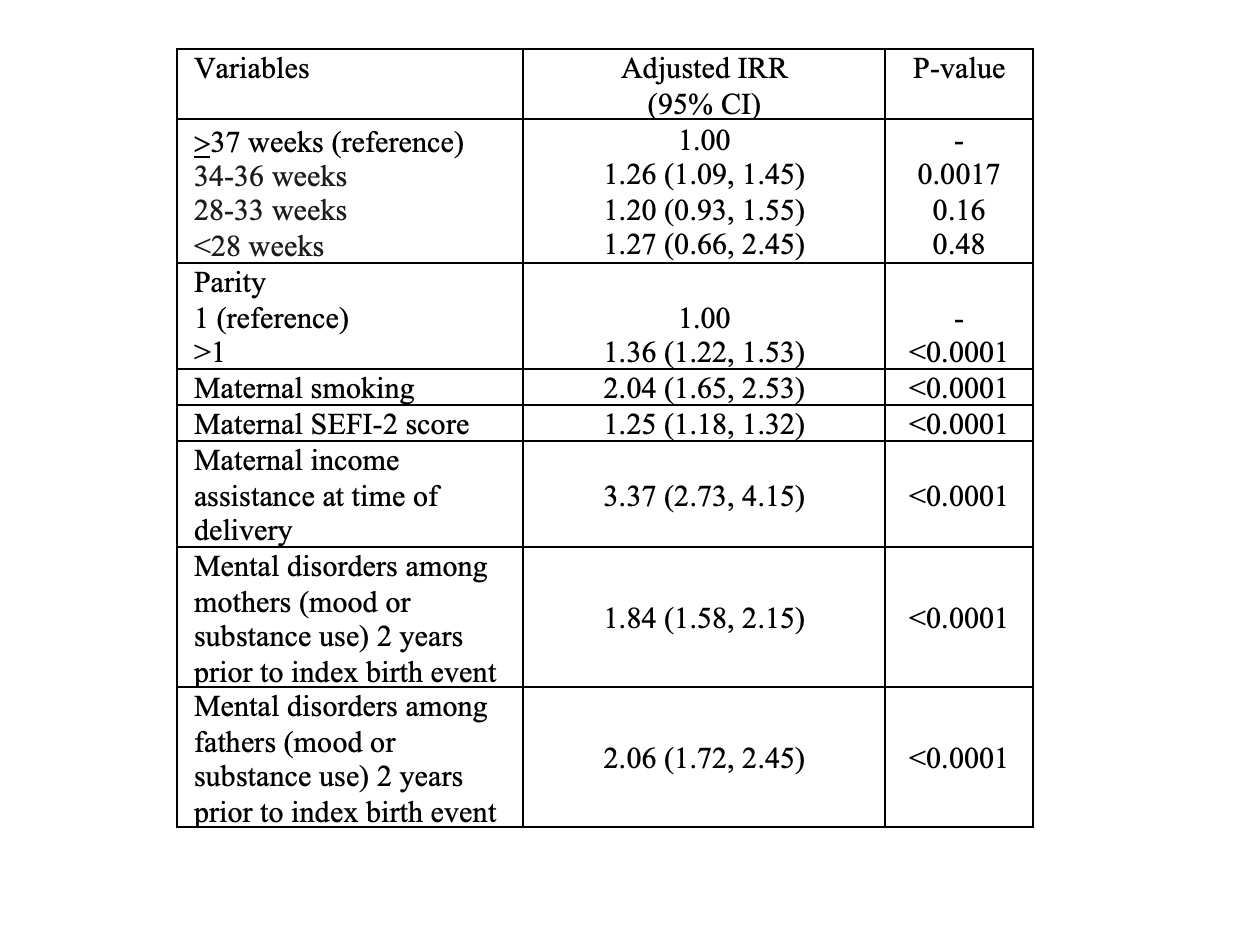Developmental and Behavioral Pediatrics: Parenting
Developmental and Behavioral Pediatrics 5
686 - Parental Separation Following Preterm Delivery in Canada: A Population-Based Cohort Study
Publication Number: 686.307
- AN
Ava M. Nykiforuk, BSc. (she/her/hers)
Medical Student
Max Rady College of Medicine, Rady Faculty of Health Sciences, University of Manitoba
Winnipeg, Manitoba, Canada
Presenting Author(s)
Background: The birth and subsequent care of children born preterm can be a stressful experience for some parents, adversely impacting their marital relationship.
Objective: Our objective was to examine the relationship and to identify associated risk factors between preterm delivery and subsequent parental separation.
Design/Methods: In this retrospective cohort study, we included all parents from Manitoba who were married or common-law with an index delivery between April 1, 1990, and March 31, 2016, and whose relationship status was available in the health insurance registry for the next five years (167,135 births). From them, each parent of a child born preterm (6,367 births) were matched to five parents of children born full-term (30,663 births) using socio-demographic variables. Parental separation within five years of childbirth was the primary outcome. Secondary outcome included the time to separation from the index delivery. A multivariable Poisson regression model was created to estimate the 5-year incidence rate ratios (IRR) of the primary outcome.
Results:
Our results showed that parents of all categories of prematurity had higher rates of separation than parents of children born full-term. Time to separation after the index birth was similar between groups (Table 1).
The regression model showed that compared to parents of children born term, only parents of children born at 34-36 weeks had a higher incidence rate of separation, although parents of children born at 28-33 weeks, and at < 28 weeks had similar IRRs (Table 2). We identified parity >1, maternal smoking, high SEFI-2 score, maternal income assistance at time of delivery and mental disorders among mothers and fathers as parental risk factors associated with separation in this cohort.
Conclusion(s):
In conclusion, parents of children born preterm had higher separation rates than parents of children born full-term. The risk factors identified can be used by health care professionals to offer appropriate supports to at-risk parents.


